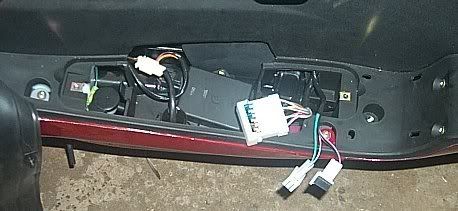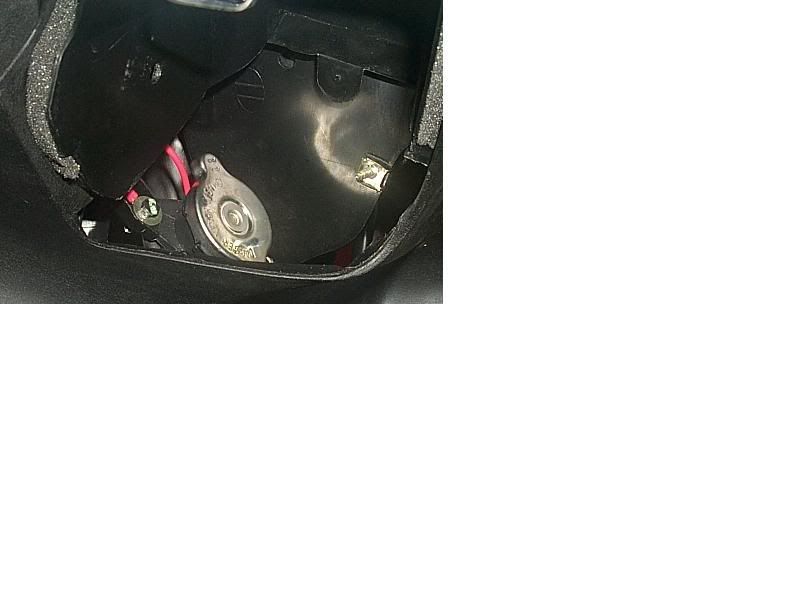Post by scooterollie on May 12, 2008 10:52:34 GMT -5
Servicing the cooling system on a new scoot with the Linhai 257/275 cc engines:
The procedure below should be performed after the scoot has been assembled, prepped and ready to run. I will not address finding the radiator cap because it’s location will be different on different model scoots. Check the coolant level in the system at the radiator cap, topping off with water if necessary. Start the scoot and allow it to idle. If your cooling system is operating properly, the temp. gauge should rise to the 1/2 to 3/4 point then the cooling fan should be heard to come on. Allow the scoot to continue running. The needle should drop slowly some and the fan shut off. With the engine still running, this cycle will repeat itself. If it does, you most likely have no problems with your cooling system and it is time to change out the coolant.
Shut off the engine. Allow it to cool so it is no more than warm. Remove the radiator cap, twisting slowly counter-clockwise to the first detend to allow any pressure remaining to escape. Then fully remove the cap. Locate the large, lower coolant hose where it attaches to the water pump on the lower left side of the engine. On the roundish water pump housing you will find three bolts. Remove the lowermost one, catching the coolnat in a pan. At this point some suggest removing the small coolant hose from where it attaches to the carb. Yamaha, in their service manual for the Euro. YP 250, recommends loosening a coolant bleed screw on the carb. I have not done either nor do I know if the carbs. on out Linhai engines have that bleed screw. A mech. friend also told me about that screw - from experience with Yamaha ATVs. When the coolant stops draining, replace the bolt. In most cases you will not be able to drain all the old coolant because of low spots in the system so it is necessary to flush the system, at least once, with water. Fill the system with water at the radiator cap neck. (replace hose at carb. or close vent screw.With the cap off, start the engine. Allow it to idle and don’t tweak the throttle or water might spurt out. If the level drops, add more until it stabilizes. Stop the engine and replace the cap. Start the engine and allow it to run and warm up as at first. Watch the gauge and listen for the fan. If it behaves as before, all is well and ready for the coolant mix. Shut off the engine and allow it to cool.
Drain water as before. Flush again with water if you wish or fill with coolant mix now. If there was some crud in the drained coolant, it would be gpreference is for Zerex G-05, a hybrid organic acid antifreeze specifically formulated for Mercedes and other Euro. manufacturers with aluminum and steel components in their cooling systems. A 50/50% mix will do the job of protecting the system from freeze ups. Fill as indicated above. At this time, use a turkey baster to suction out the old coolant from the recovery/overflow tank. Fill with fresh mix to the low mark on the tank. Some recommend starting the engine and removing the small carb. coolant hose/open bleed screw to allow any trapped air to escape. Replace hose/tighten screw when coolant comes out. Some coolant/air mix may initially spurt out but keep open until it is pure liquid. Run the scoot al idle, allowing it to warm up and the fan to cycle some. Shut down and allow to cool. Remove radiator cap and top off coolant if necessary. Adjust level in recovery tank if necessary. You should now be good to go!
If your temp. gauge pegged and the fan didn’t come on:
On some scoots, the thermostat may intiially be stuck closed because of the poor corrosion inhibitors in Chinese anitfreeze. In the special case of the Linhai 300 scoots, because they have sat in the warehouse for up to 2 years, there may be an internal aluminum corrosion build up and blockage in the system. If it is a case of a stuck thermostat, allowing the temp. to build up at idle to the “red” point on the gauge and tweaking the throttle several times may cause the thermostat to pop open. If you are lucky and this happens, the needle will then start to drop and the fan come on and all will be normal. This was the case with my Linhai 300 and some others, as well as some CFMoto 244 cc and Linhai 257 cc engines. If you are less fortunate, there may be a build up of corrosion inside your system blocking the flow of coolant. One Linhai 300 owner found a total blockage at the water pump exit, IIRC. If so, that calls for more drastic measures and should be addressed by you in a new thread in the 250+ section.
Coolant replacement interval:
Some manuals recommend replacing the coolant every year. With top quality coolants, that frequency shouldn’t be necessary. The Zerex G-05 antifreeze is certified for 5 year drain intervals. If you feel uncomfortable with 5 yrs., every 2-3 years will do fine.
The procedure below should be performed after the scoot has been assembled, prepped and ready to run. I will not address finding the radiator cap because it’s location will be different on different model scoots. Check the coolant level in the system at the radiator cap, topping off with water if necessary. Start the scoot and allow it to idle. If your cooling system is operating properly, the temp. gauge should rise to the 1/2 to 3/4 point then the cooling fan should be heard to come on. Allow the scoot to continue running. The needle should drop slowly some and the fan shut off. With the engine still running, this cycle will repeat itself. If it does, you most likely have no problems with your cooling system and it is time to change out the coolant.
Shut off the engine. Allow it to cool so it is no more than warm. Remove the radiator cap, twisting slowly counter-clockwise to the first detend to allow any pressure remaining to escape. Then fully remove the cap. Locate the large, lower coolant hose where it attaches to the water pump on the lower left side of the engine. On the roundish water pump housing you will find three bolts. Remove the lowermost one, catching the coolnat in a pan. At this point some suggest removing the small coolant hose from where it attaches to the carb. Yamaha, in their service manual for the Euro. YP 250, recommends loosening a coolant bleed screw on the carb. I have not done either nor do I know if the carbs. on out Linhai engines have that bleed screw. A mech. friend also told me about that screw - from experience with Yamaha ATVs. When the coolant stops draining, replace the bolt. In most cases you will not be able to drain all the old coolant because of low spots in the system so it is necessary to flush the system, at least once, with water. Fill the system with water at the radiator cap neck. (replace hose at carb. or close vent screw.With the cap off, start the engine. Allow it to idle and don’t tweak the throttle or water might spurt out. If the level drops, add more until it stabilizes. Stop the engine and replace the cap. Start the engine and allow it to run and warm up as at first. Watch the gauge and listen for the fan. If it behaves as before, all is well and ready for the coolant mix. Shut off the engine and allow it to cool.
Drain water as before. Flush again with water if you wish or fill with coolant mix now. If there was some crud in the drained coolant, it would be gpreference is for Zerex G-05, a hybrid organic acid antifreeze specifically formulated for Mercedes and other Euro. manufacturers with aluminum and steel components in their cooling systems. A 50/50% mix will do the job of protecting the system from freeze ups. Fill as indicated above. At this time, use a turkey baster to suction out the old coolant from the recovery/overflow tank. Fill with fresh mix to the low mark on the tank. Some recommend starting the engine and removing the small carb. coolant hose/open bleed screw to allow any trapped air to escape. Replace hose/tighten screw when coolant comes out. Some coolant/air mix may initially spurt out but keep open until it is pure liquid. Run the scoot al idle, allowing it to warm up and the fan to cycle some. Shut down and allow to cool. Remove radiator cap and top off coolant if necessary. Adjust level in recovery tank if necessary. You should now be good to go!
If your temp. gauge pegged and the fan didn’t come on:
On some scoots, the thermostat may intiially be stuck closed because of the poor corrosion inhibitors in Chinese anitfreeze. In the special case of the Linhai 300 scoots, because they have sat in the warehouse for up to 2 years, there may be an internal aluminum corrosion build up and blockage in the system. If it is a case of a stuck thermostat, allowing the temp. to build up at idle to the “red” point on the gauge and tweaking the throttle several times may cause the thermostat to pop open. If you are lucky and this happens, the needle will then start to drop and the fan come on and all will be normal. This was the case with my Linhai 300 and some others, as well as some CFMoto 244 cc and Linhai 257 cc engines. If you are less fortunate, there may be a build up of corrosion inside your system blocking the flow of coolant. One Linhai 300 owner found a total blockage at the water pump exit, IIRC. If so, that calls for more drastic measures and should be addressed by you in a new thread in the 250+ section.
Coolant replacement interval:
Some manuals recommend replacing the coolant every year. With top quality coolants, that frequency shouldn’t be necessary. The Zerex G-05 antifreeze is certified for 5 year drain intervals. If you feel uncomfortable with 5 yrs., every 2-3 years will do fine.











